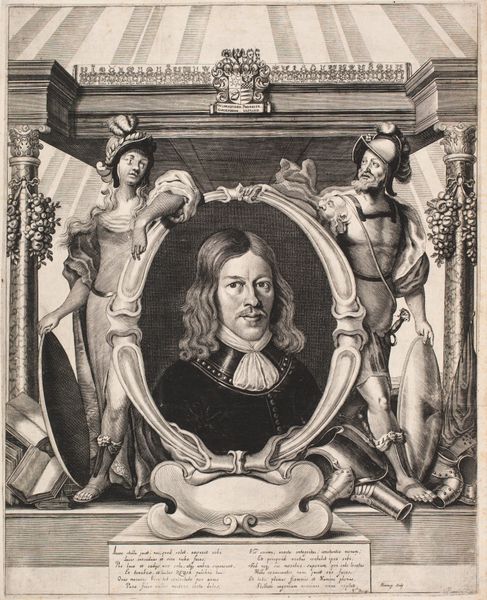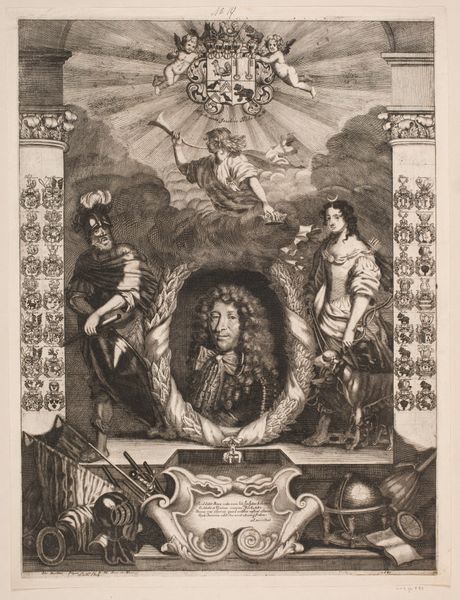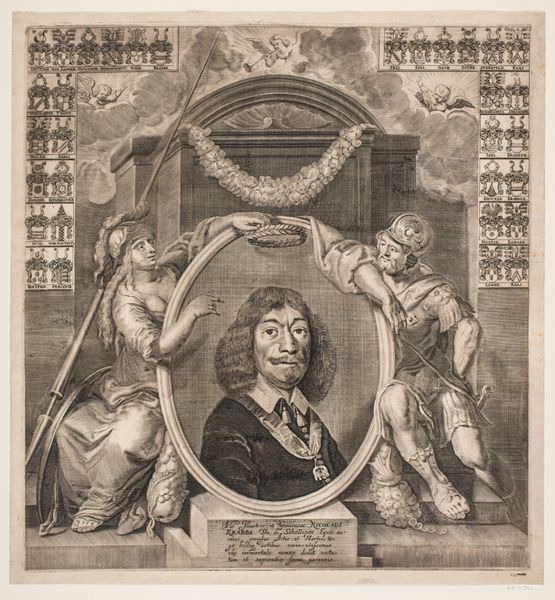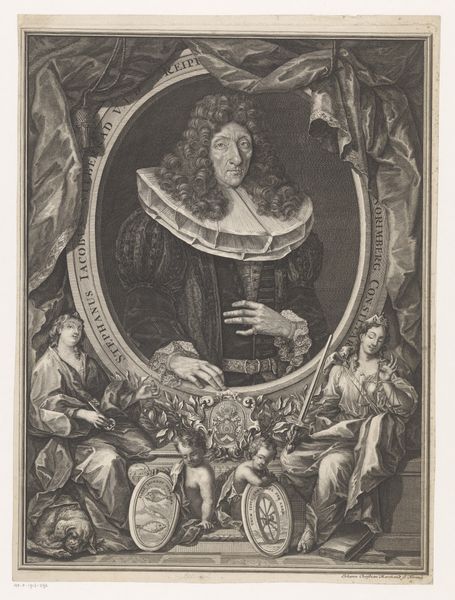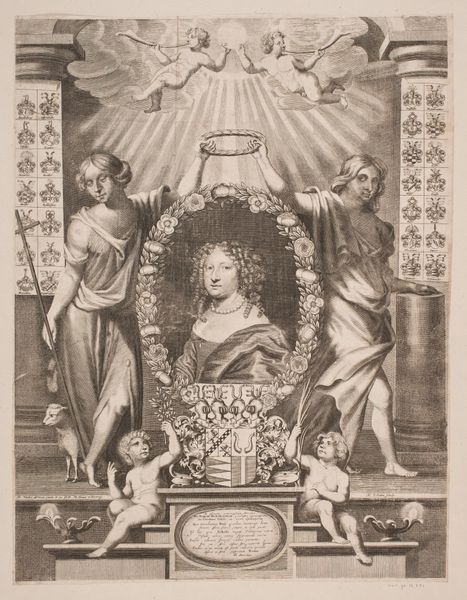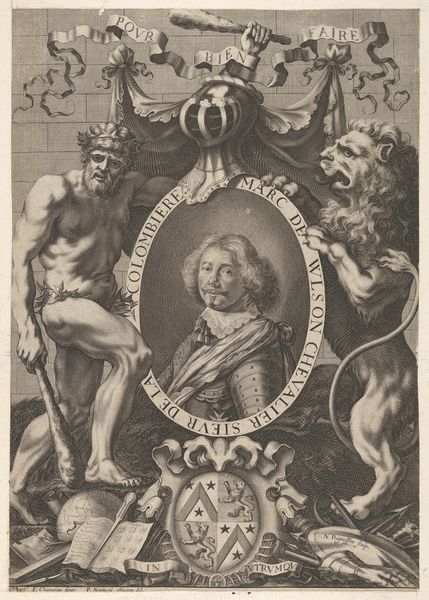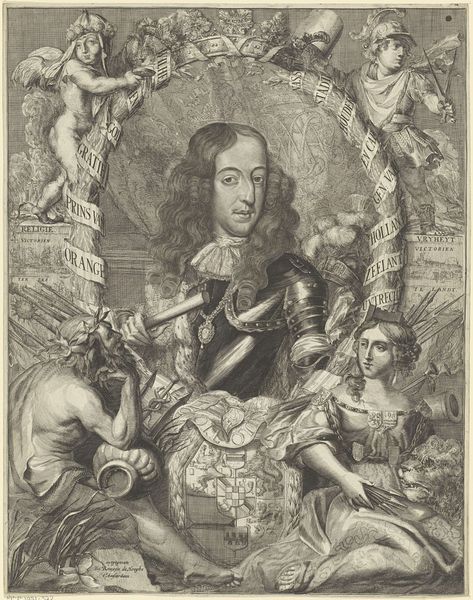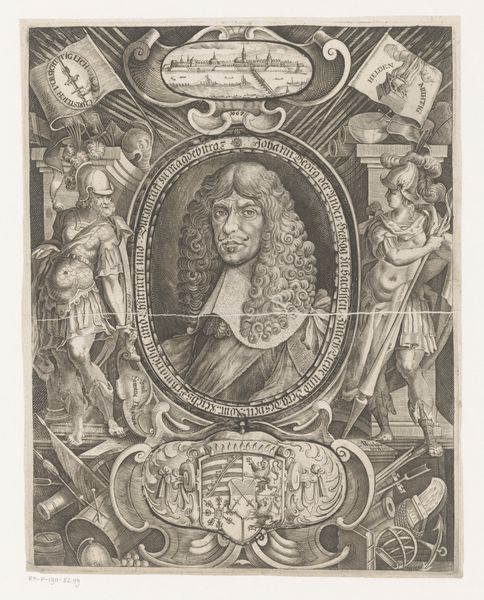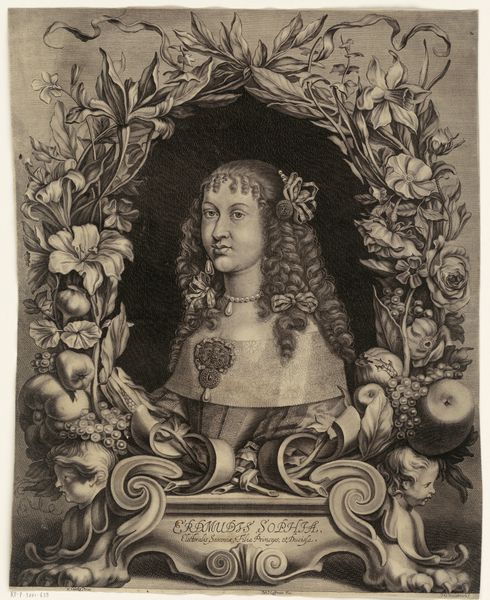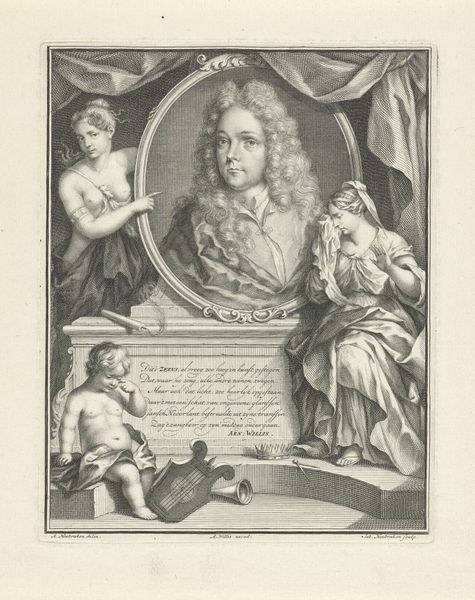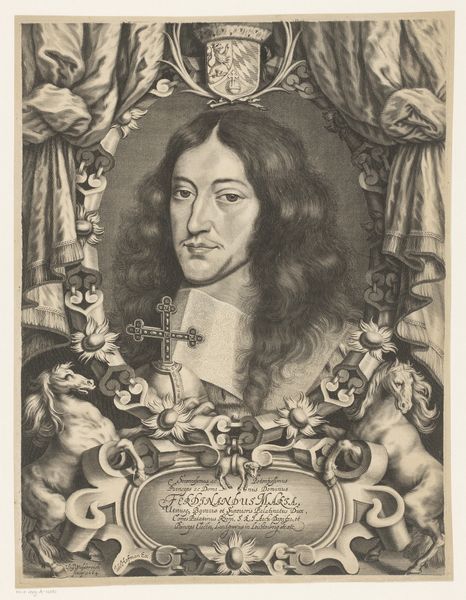
print, engraving
#
portrait
#
baroque
# print
#
portrait drawing
#
history-painting
#
engraving
Dimensions: 554 mm (height) x 420 mm (width) (bladmaal)
Curator: This striking portrait is an engraving by Albert Haelwegh, created sometime between 1665 and 1669. It depicts Christen Barnekow, a prominent figure of his time. Editor: It's intense. The oval portrait feels classical, almost Roman, yet there are allegorical figures everywhere, a jumble of iconography. Who exactly was Barnekow, and why this grand presentation? Curator: Christen Barnekow was a high-ranking nobleman and statesman in Denmark-Norway. Haelwegh aimed to capture not just his likeness, but his essence—his virtue and status. We see allegorical figures of Justice and Fame, reinforcing his image as an accomplished ruler. Editor: Justice and Fame—always good PR. But looking at this now, I wonder about the inherent biases in these portrayals of power. It's not just a portrait; it’s a carefully constructed narrative, masking what realities? Curator: I see it as less of a mask and more of a language. Justice, symbolized by the scales and sword, represents his commitment to fair rule. Fame, with her trumpet, ensures his legacy endures through cultural memory. These are symbols, a shared visual language understood at the time. Editor: But whose stories are valued enough to be memorialized? Look at the almost unsettling gaze of Justice, rendered as hyper-idealized European figure—the standards encoded in these symbols serve certain demographics, reinforce social structures. Curator: Yet it also embodies a yearning for specific principles of the time, regardless of who gets the loudest voice. We project meaning into the symbols based on the viewer and period. What feels like injustice in one age could represent stability and order in another. The swirling clouds above evoke a spiritual quality; does that suggest a sense of divinely-sanctioned right? Editor: Maybe...or perhaps it's window dressing that gives this work its distinctive Baroque theatricality. It prompts us to consider not only what power looked like but *how* it constructed its image—in ways that continue to echo in our present culture. The visual cues and tropes continue to shape ideas of power, heroism, and authority. Curator: Absolutely. Haelwegh gives us insight into how historical memory was deliberately forged and perpetuated. We continue to analyze and decode its implications. Editor: It leaves you pondering the ways symbols can elevate or obscure the truth.
Comments
No comments
Be the first to comment and join the conversation on the ultimate creative platform.

